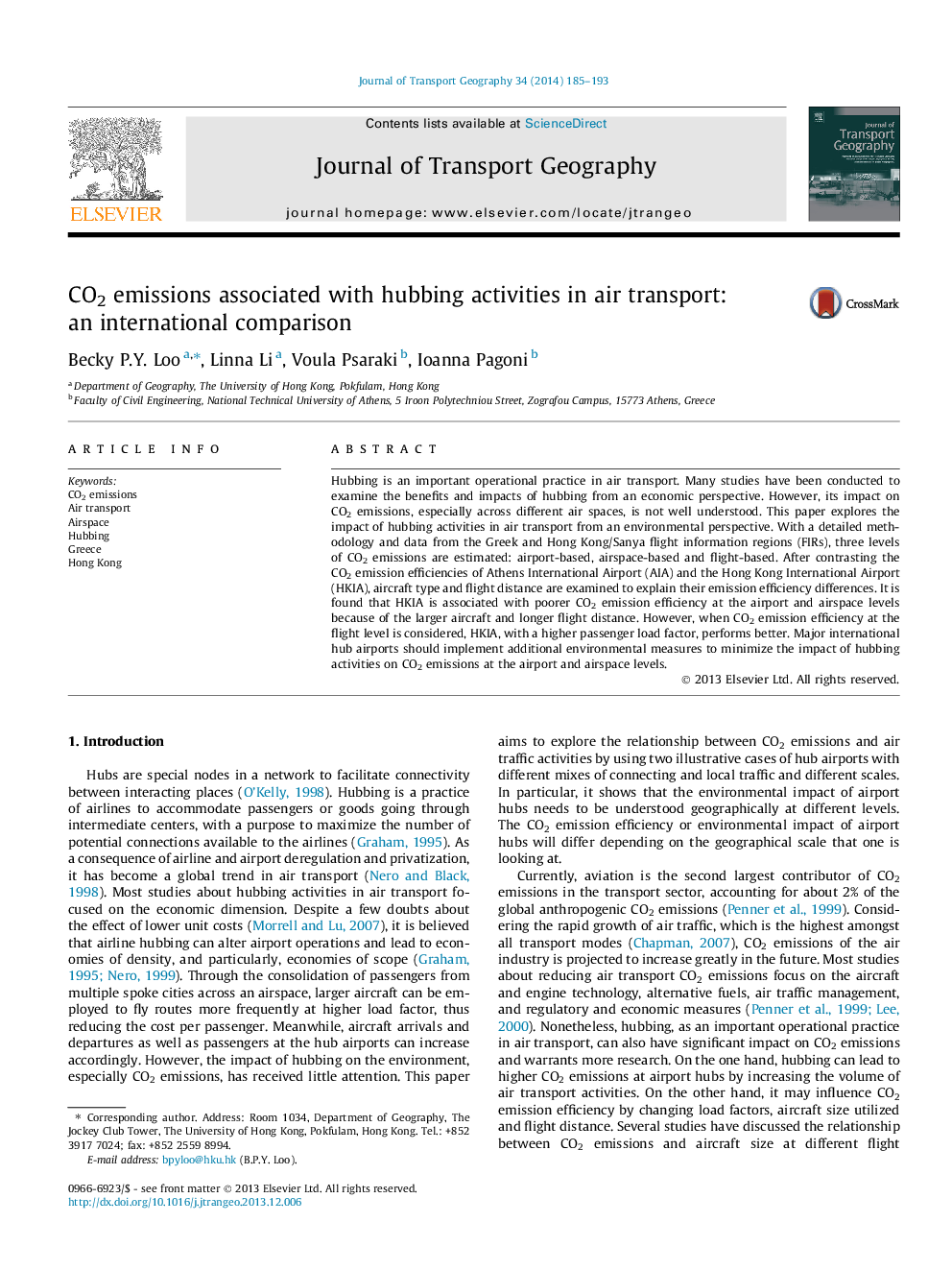| Article ID | Journal | Published Year | Pages | File Type |
|---|---|---|---|---|
| 7486276 | Journal of Transport Geography | 2014 | 9 Pages |
Abstract
Hubbing is an important operational practice in air transport. Many studies have been conducted to examine the benefits and impacts of hubbing from an economic perspective. However, its impact on CO2 emissions, especially across different air spaces, is not well understood. This paper explores the impact of hubbing activities in air transport from an environmental perspective. With a detailed methodology and data from the Greek and Hong Kong/Sanya flight information regions (FIRs), three levels of CO2 emissions are estimated: airport-based, airspace-based and flight-based. After contrasting the CO2 emission efficiencies of Athens International Airport (AIA) and the Hong Kong International Airport (HKIA), aircraft type and flight distance are examined to explain their emission efficiency differences. It is found that HKIA is associated with poorer CO2 emission efficiency at the airport and airspace levels because of the larger aircraft and longer flight distance. However, when CO2 emission efficiency at the flight level is considered, HKIA, with a higher passenger load factor, performs better. Major international hub airports should implement additional environmental measures to minimize the impact of hubbing activities on CO2 emissions at the airport and airspace levels.
Related Topics
Life Sciences
Environmental Science
Environmental Science (General)
Authors
Becky P.Y. Loo, Linna Li, Voula Psaraki, Ioanna Pagoni,
